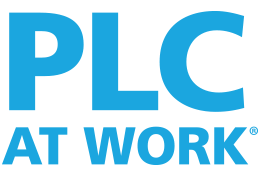DEMOGRAPHICS
The Bartow County College and Career Academy (BCCCA) is a collaborative venture among the community, K–12 education, post-secondary education, and business and industry to ensure a viable workforce along with continued opportunities for the students of the Bartow County School System.
603 Students
- 11% Special education
- 2% English language learners
- 56% Eligible for free or reduced lunch
Bartow County College and Career Academy's CHALLENGE
When Dr. Greg Doss, principal and CEO of Bartow County College and Career Academy (BCCCA), answered the call of superintendent Dr. Phillip Page to implement Professional Learning Communities (PLC) at Work® in his school, he soon realized the potential of PLC to help his staff better serve students.
The Academy is a unique learning environment. Upon entering tenth grade, students from each of the three local high schools may elect to attend the Academy for specific career pathway opportunities the school offers. Educators work to ensure that all students graduate with a plan to be enrolled in postsecondary education, enlisted in the military, or employed in local industry.
“I approached this work as an intentional shift,” Doss explains. “I saw it as moving from a perspective of teaching to a perspective of learning and from isolation to collaboration, as well as changing the paradigm of results from emphasizing points earned to looking for real evidence of proficiency.”
“I approached this work as an intentional shift—moving from a perspective of teaching to a perspective of learning and from isolation to collaboration.”
IMPLEMENTATION
Prior to implementation, leaders from the Academy attended the Solution Tree Culture Keepers Conference in Atlanta, Georgia, with other school leaders during the summer. The following fall, leaders began a study of Learning by Doing (DuFour et.al, 2016) and kicked off a process to collaboratively shift school culture.
The first step of implementation in year one was to create a guiding coalition. Members of this coalition crafted new mission and vision statements and created collective commitments. Using Learning by Doing, the guiding coalition studied the three big ideas, four guiding questions, and critical vocabulary of the PLC process. These initial leaders helped to lay the foundation for collaborative teams that would begin working together in the fall of year two. Guiding coalition members also attended a PLC at Work Institute the following summer to continue their learning.
Among the first orders of action taken by the entire staff were identifying essential standards and working collaboratively to ensure that teacher teams were on the same page as far as standards and assessments. The Academy has the added challenge of coordinating with three base schools in which students spend a good part of their instructional day, so their collaborative process must include cross-systems efforts.
The biggest challenge the Academy has faced during implementation is figuring out collaborative teams for singletons. “After going through several renditions of what common standards would look like for a team consisting of career-oriented teachers of law enforcement, cosmetology, AV tech, engineering, and teaching, ”we identified one standard—employability skills—on which they could work collaboratively,” says Doss.
The daily work of staff is guided by a living document the Academy calls their PLC Playbook. As educators grow in their knowledge, so does the playbook. They also maintain healthy progress by taking on new processes, strategies, and practices in small bites. As Doss says, “Less is more.”
The guiding coalition is there every step of the way to ensure staff stay on target with the mission, vision, values, and goals that are foundational to their ever-expanding playbook.
RESULTS
Doss says his health science team in particular is seeing great results from their work with PLC. Even though each teacher has a particular focus in the health care field, together they are able to collaboratively align their assessments vertically as students advance from basic courses to more specialized study and also support one another within the same grade level. For example, if one teacher is stronger at teaching a particular lesson, he or she will take on students from other classes for that specific lesson. All of this is to ensure all students have the best opportunity to learn at the highest level.
As a result of the collaborative work of the Academy’s health science teachers, the student pass rate on the National HealthCareer Association (NHA) exam rose from 15% to 88%. The Academy’s health care results now surpass the national average on the NHA exams.
Other Academy Highlights
- US History team became the first A-Team from the Academy to be recognized by the district and the first US History A-Team districtwide
- Health care team recognized as the first Career, Technical, and Agricultural Education A-Team in the district
- US History students outperformed the state in years 3 and 4 of implementation by 5% and 3.5% respectively
Health Science Student Pass Rates on Certification Exams
WHY PLC AT WORK®?
Professional learning communities (PLCs) are schools that empower educators to work collaboratively in recurring cycles of collective inquiry and action research to achieve better results for the students they serve.



